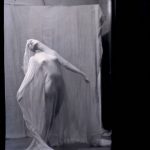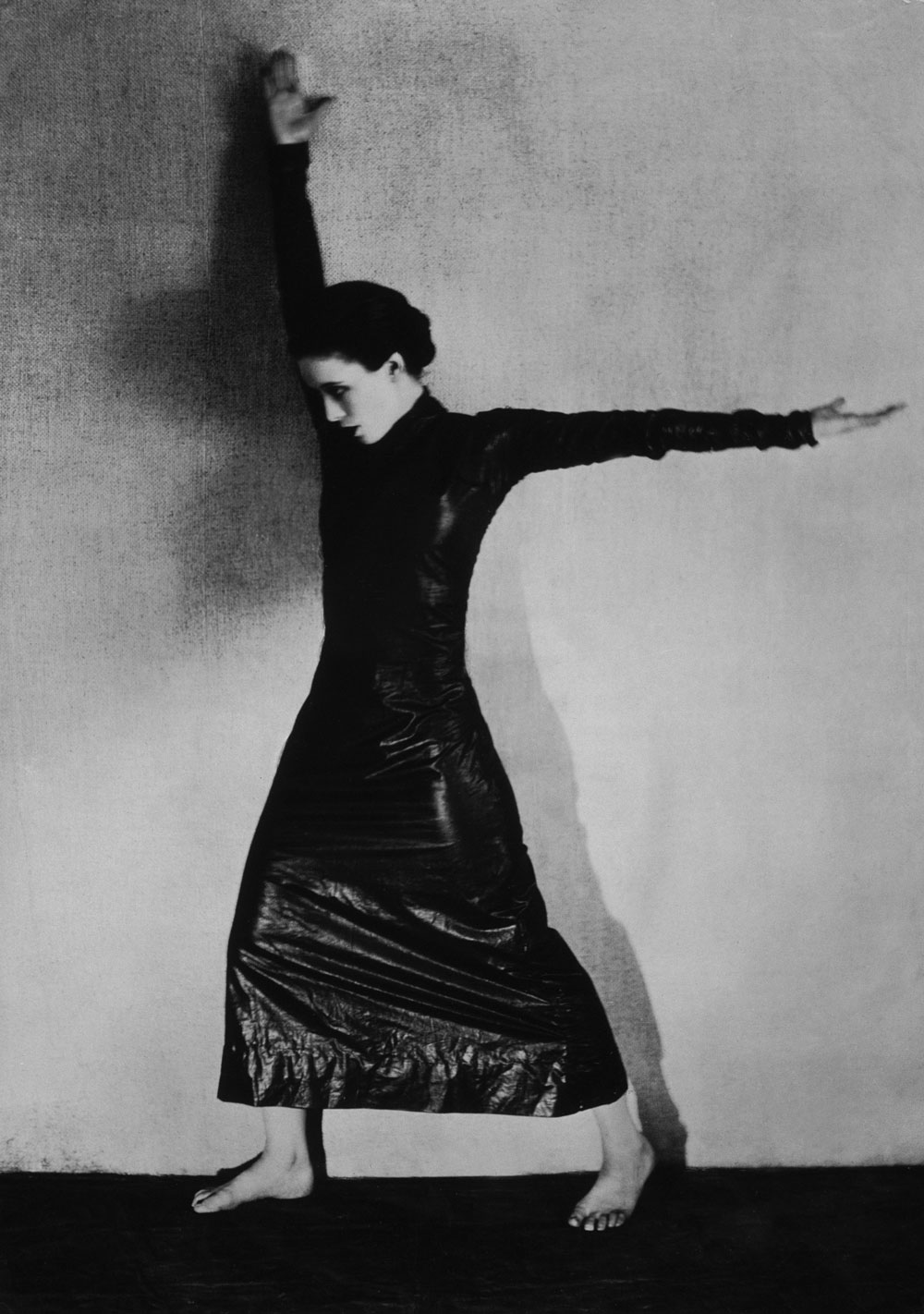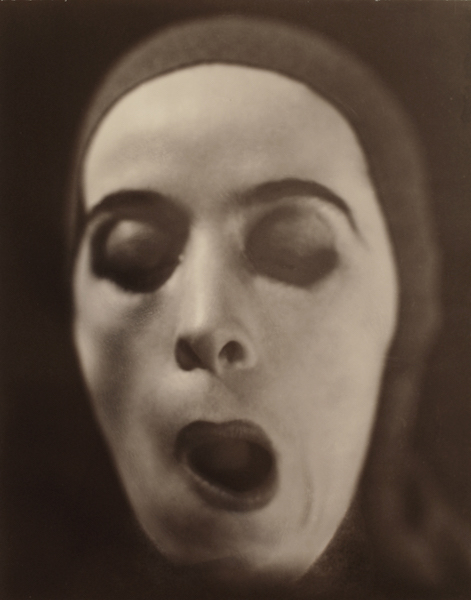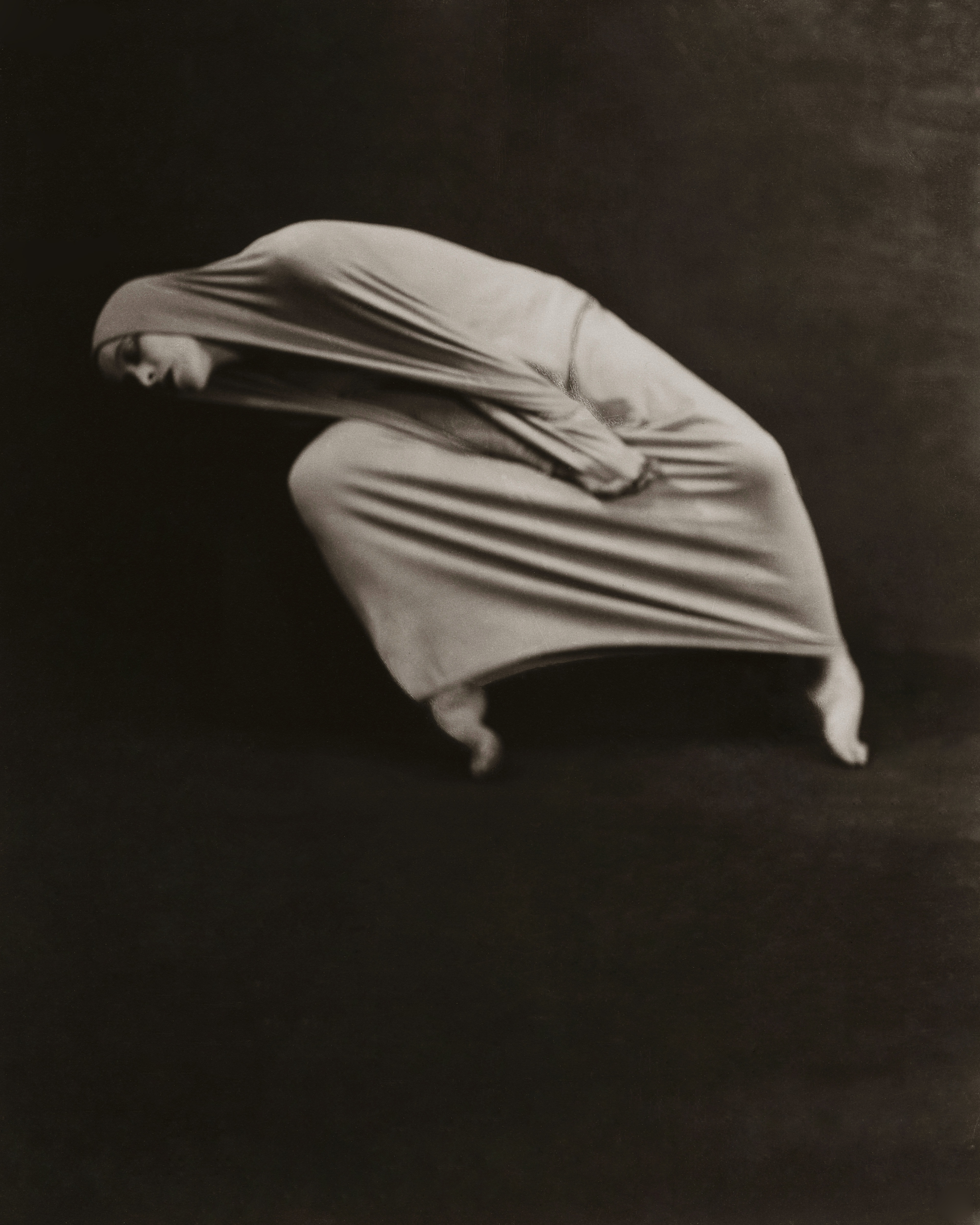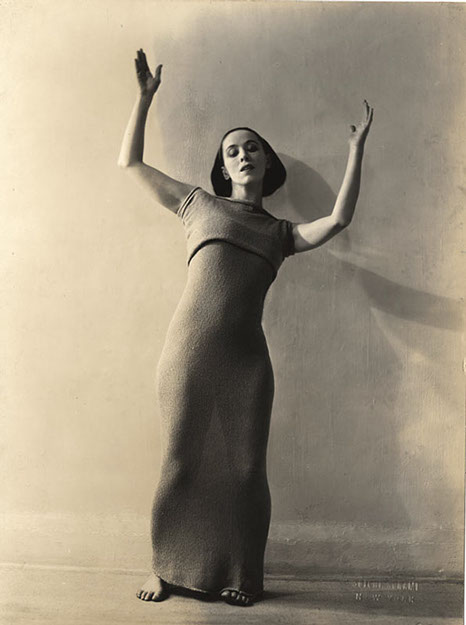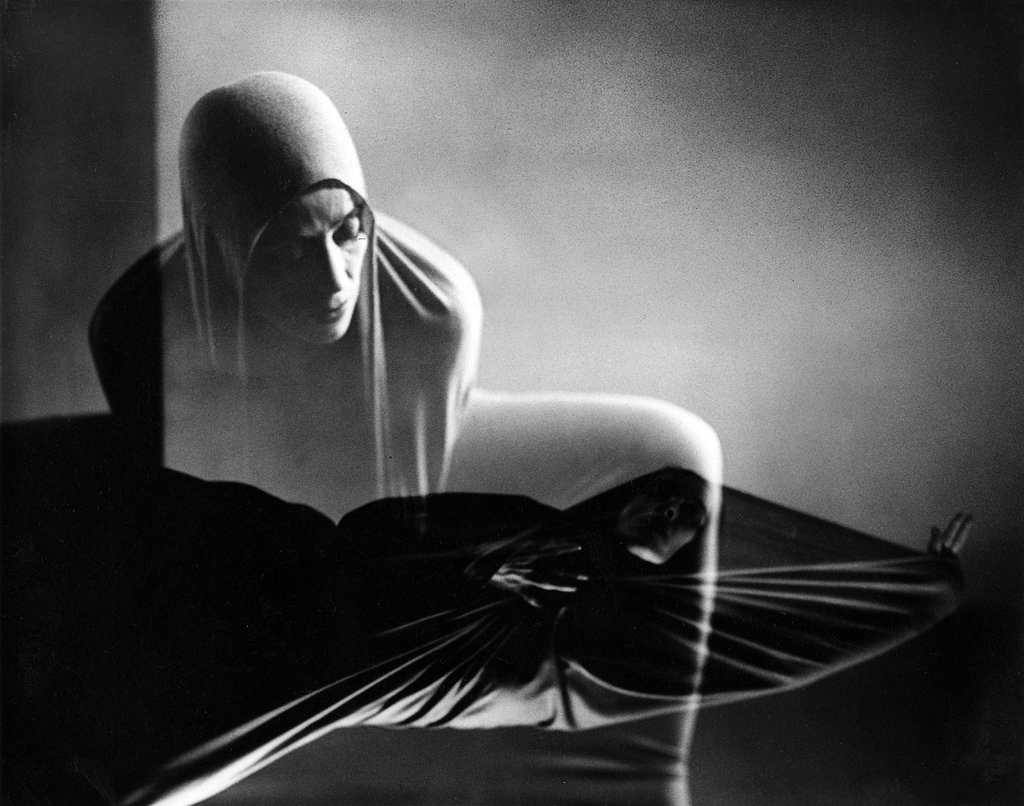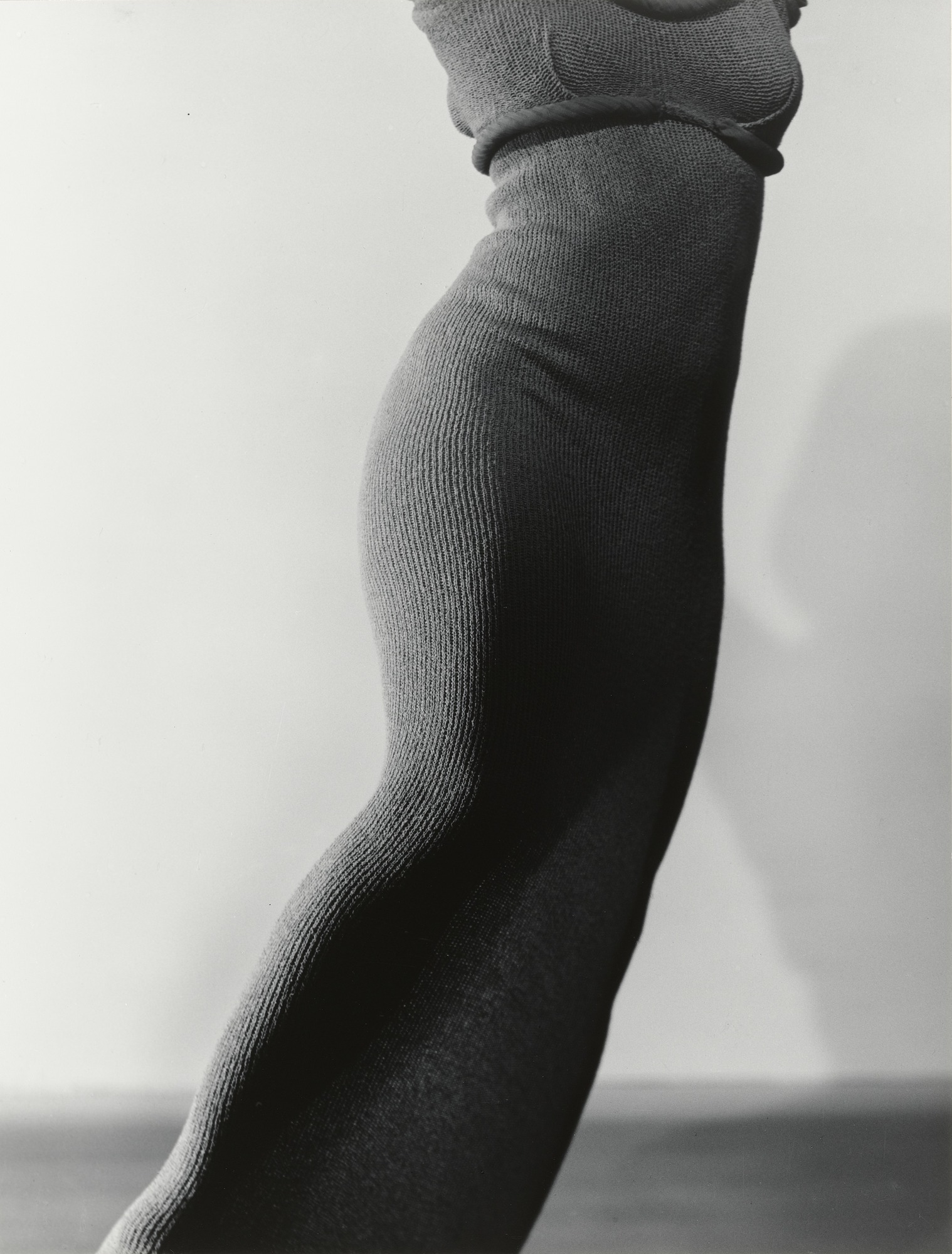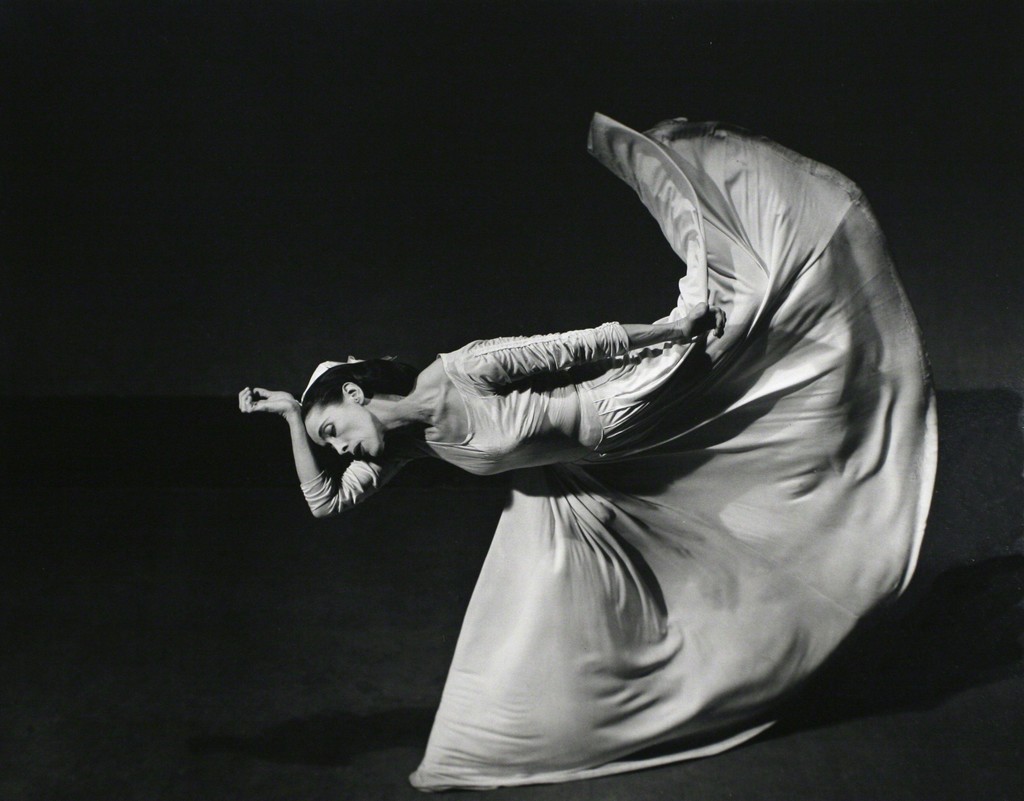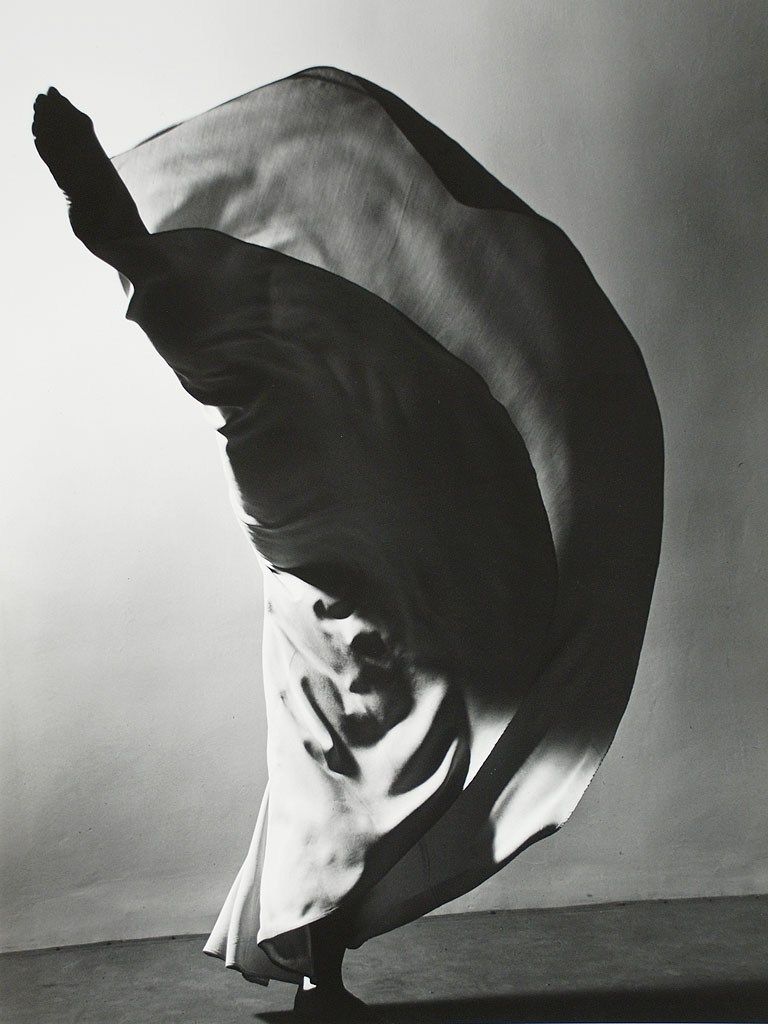Martha Graham (Allegheny City, ora Pittsburgh 1894 – New York 1991) fu una delle danzatrici più influenti del XX secolo. Icona e pioniera della modern dance, la sua tecnica è tutt’oggi studiata e tramandata dalla sua compagnia, la Martha Graham Dance Company, fondata nel 1926.
All’età di quattordici anni Graham si trasferì assieme alla sua famiglia a Santa Barbara dove iniziò a studiare recitazione e danza, decidendo di farne la sua professione dopo aver visto uno spettacolo di Ruth St. Denis nel 1911. Studiò alla Danishawn, scuola fondata dalla St. Denis e suo marito Ted Shawn, debuttando nel 1917 nello spettacolo della compagnia Serata Morisca. Dopo diverse tournée nazionali e internazionali, nel 1923 entrò a far parte della compagnia Greenwich Village Follies di New York dove rimase per due anni.
Nel debutto della sua propria compagnia andato in scena nel 1926, A Study in Lacquer, inserì i suoi primi studi sulla tecnica da lei chiamata contraction and release. In questo stesso periodo iniziò la sua collaborazione con il fotografo Soichi Sunami, producendo immagini che sono diventate icone della modern dance.
Gli anni Trenta furono caratterizzati da una fertile attività artistica, Graham creò molti assoli e pezzi di gruppo come Lamentation (1931) e Deep Song (1937) che la portarono al successo.
Negli anni Quaranta entrarono a far parte della compagnia, fino ad allora tutta al femminile, anche uomini, tra questi Erick Hawkins (che diverrà poi suo marito) e Merce Cunningham. In questi anni creò alcuni pezzi ispirati alla storia americana come Appalachian Spring (1944) e altri con temi mitologici legati alla mitologia dell’antica Grecia, come Night Journey (1947).
Dalla collaborazione con la fotografa Barbara Morgan nel 1941 nacque Martha Graham: Sixteen Dances in Photographs, un volume fotografico che raccoglie gli scatti che la Morgan fece alla compagnia dal 1935.
Nel 1976 fu la prima danzatrice a ricevere la Medaglia presidenziale della libertà e nel 1984 ricevette la Légion d’Honneur dal governo francese. All’età di settantasei anni andò in scena per l’ultima volta senza però smettere di insegnare e coreografare.
Suoi materiali sono conservati in diversi fondi d’archivio, tra cui il Martha Graham Dance Company Archive; la New York Public Library for the Performing Arts; la Library of Congress Music Division; la Library Special Collections and Archives della University of California (Irvine), e The New School Archive. [Elisa Pescitelli]
Fonti e Bibl.: Barbara Morgan, Martha Graham: Sixteen Dances in Photographs, Duell, Sloan and Pearce, New York 1941; Leroy Leatherman, Martha Graham: Portrait of the Lady as an Artist, Alfred A. Knopf, New York 1966; Martha Graham, The Notebooks of Martha Graham, Harcourt Brace Jovanovich, New York 1973; Don McDonagh, Martha Graham: A Biography, David & Charles, London 1974; Ernestine Stodelle, Deep Song: The Dance Story of Martha Graham, Schirmer Books, New York 1984; Merle Armitage, Martha Graham: The Early Year, Da Capo Press, New York 1985; Paul Taylor, Private Domain. An Autobiography, Knopf, New York 1987; Martha Graham, Blood Memory: An Autobiography, Doubleday, New York 1991; Agnes de Mille, Martha: The Life and Work of Martha Graham, MD: Random House, Westminster 1991; Erick Hawkins, The Body Is a Clear Place and Other Statements on Dance, Princeton Book Co, Hightstown 1992; Janet Mansfield Soares, Louis Horst Musician in a Dancer’s World, Duke University Press, Durham 1992; Richard Layman, Victor Bondi, American Decades 1940–1949, Gale Research International, Detroit 1995; Dorothy Bird, Bird’s Eye View: Dancing with Martha Graham and on Broadway, University of Pittsburgh Press, Pittsburgh 1997; Robert Tracy, Goddess: Martha Graham’s Dancers Remember, Limelight Editions, 1997; Susan Ware, Letter to the World: Seven Women Who Shaped the American Century, W.W. Norton, 1998; Newman Gerald, Martha Graham: Founder of Modern Dance, Franklin Watts, Danbury, 1998; Russell Freedman, Martha Graham: A Dancer’s Life, Clarion Books, New York 1998; Alice Helpern, Martha Graham: A special issue of the journal Choreography and Dance, vol. 5 part. 2, Routledge 1999; Julia L. Foulkes, Modern Bodies: Dance and American Modernism from Martha Graham to Alvin Ailey, University of North Carolina Press, 2002; Marian Horosko, Martha Graham: The Evolution of Her Dance Theory and Training, University Press of Florida, 2002; Marian Horosko, Martha Graham the Evolution of Her Dance Theory and Training, Univ. Press of Florida, Gainesville 2002; Susanne Franco, Martha Graham, Società Editrice L’Epos, Palermo 2003; Janet Lynn Roseman, Dance Was Her Religion: The Spiritual Choreography of Isadora Duncan, Ruth St. Denis and Martha Graham, Hohm Press, 2004; Kimerer L. Lamothe, Nietzsche’s Dancers: Isadora Duncan, Martha Graham, and the Revaluation of Christian Values, Palgrave Macmillan, 2006; Debra Craine, Judith Mackrell, The Oxford Dictionary of Dance, Oxford University Press, 2010; Stuart Hodes, Part Real-Part Dream, Dancing with Martha Graham, Concord ePress, Concord, MA, 2011; Mark Franco, Martha Graham in Love and War: The Life in the Work, Oxford University Press, 2012.
Sitografia: Martha Graham Dance Company (URL: http://www.marthagraham.org); Martha Graham School (URL: http://marthagraham.edu).
Martha Graham (Allegheny City, now Pittsburgh, 1894 – New York 1991) was one of the most influential dancers of the 20th century. An icon and a pioneer of modern dance, her technique is still studied and passed down by her company, the Martha Graham Dance Company, founded in 1926.
At the age of fourteen, Graham and her family moved to Santa Barbara where she began studying acting and dance, and after seeing a performance by Ruth St. Denis in 1911, she decided to make dance her profession. She studied at Danishawn, a school founded by St. Denis and her husband Ted Shawn, and debuted in 1917 in the Serata Morisca company show. After several national and international tours, in 1923 Graham joined the Greenwich Village Follies company in New York where she remained for two years. In the debut of her own company in 1926, A Study in Lacquer, Graham included her initial studies on the technique she called contraction and release. In this same period, she began her collaboration with photographer Soichi Sunami, producing images that have become icons of the modern dance.
The 1930s were characterized by a fertile artistic activity: Graham created many solos and group pieces such as Lamentation (1931) and Deep Song (1937), which led her to success.
In the 1940s, men, including Erik Hawkins (who later became her husband) and Merce Cunningham, joined the company, until then all-female. During these years, she created some pieces inspired by the American history, such as Appalachian Spring (1944), and others with mythological themes related to the mythology of ancient Greece, such as Night Journey (1947).
Martha Graham: Sixteen Dances in Photographs was put together in 1941 from the collaboration with the photographer Barbara Morgan: it is a photographic volume that collects shots of the company from 1935 took by Morgan.
In 1976, she was the first dancer to receive the Presidential Medal of Freedom, and in 1984 she received the Légion d’Honneur from the French government. At the age of seventy-six, she went on stage for the last time without, however, ceasing to teach and choreograph. [trad. di Marta Marinelli]
